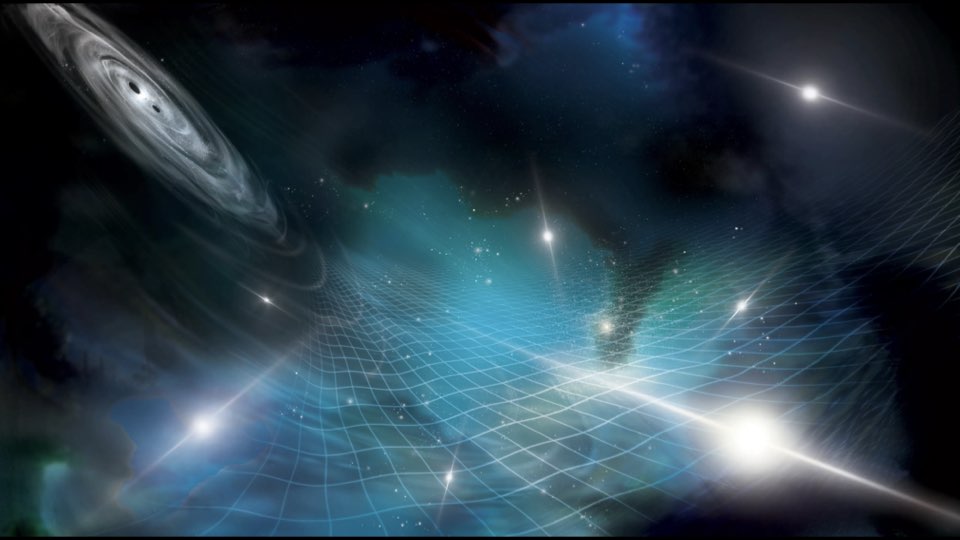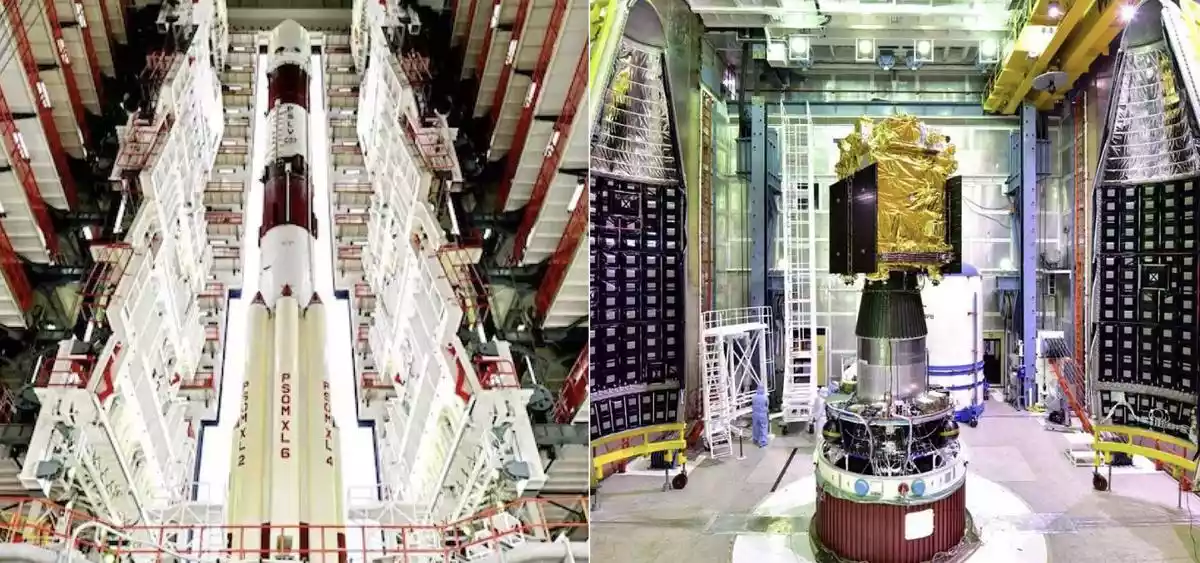Scientists have recently confirmed the existence of gravitational waves, validating Albert Einstein’s century-old theory. This breakthrough discovery unveils a new chapter in our understanding of the universe and its workings.

This artist’s concept shows stars, black holes, and nebula laid over a grid representing the fabric of space-time. Ripples in this fabric are called gravitational waves. The NANOGrav collaboration detected evidence of gravitational waves created by black holes billions of times the mass of the Sun. Photo Credit: NANOGrav collaboration; Aurore Simonet
Scientists have revealed new evidence confirming the presence of gravitational waves, a phenomenon initially predicted by Albert Einstein over a century ago. The finding, which was reported on June 28, represents a tremendous step forward in our knowledge of the cosmos and opens up new areas for exploration in science.
Gravitational waves are ripples in space-time created by enormous objects moving across space. Einstein predicted them in 1916 as an extension of his theory of general relativity, which characterized gravity as the deformation of space and time by matter. However, it wasn’t until 2015 that scientists used the Laser Interferometer Gravitational-Wave Observatory (LIGO) to directly detect these waves. The finding of high-frequency waves produced by the collision of two black holes was a game changer.
Now, a team of scientists from the North American Nanohertz Observatory for Gravitational Waves (NANOGrav) has presented the first evidence of a background of long-wavelength gravitational waves that permeate the cosmos. These waves, detected at low frequencies, create a cosmic hum, similar to hearing the murmur of a large group of people talking at a party without distinguishing any particular voice.
Over 190 scientists from the United States and Canada, including researchers from NASA’s Jet Propulsion Laboratory and other NASA facilities, have spent more than 15 years gathering high-precision data from ground-based radio telescopes as part of the NANOGrav collaboration. The scientists were able to identify minor variations in time induced by gravitational waves moving between Earth and the pulsars by examining pulsars, which are dense relics of exploding stars that generate regular radio waves.
The pulsar timing technique employed by NANOGrav involves measuring the arrival time of radio wave pulses from a network of pulsars spread across the Milky Way. The minute disruptions in the arrival times, caused by the stretching and squeezing of space-time as gravitational waves pass through, provided the crucial evidence for the existence of the gravitational wave background.
The observed gravitational waves are expected to be the result of two supermassive black holes circling and eventually merging at billions of times the mass of our Sun.These cosmic collisions, which can span millions of years, are thought to occur in the majority of galaxies and play an important role in defining their evolution.
The discovery by NANOGrav complements the previous detection of gravitational waves by LIGO in 2015. While LIGO observed waves at much shorter wavelengths, originating from black holes about 30 times the mass of our Sun, NANOGrav’s findings provide crucial insights into the long-wavelength gravitational wave background.
This revelation has far-reaching ramifications. It not only confirms Einstein’s theory of general relativity in another way, but it also offers up new pathways for research into the cosmos. Gravitational waves enable scientists to investigate previously unknown cosmic events. They shed new light on the behavior of supermassive black holes, the development and evolution of galaxies, and even the early phases of the cosmos following the Big Bang.
In the future, NASA will contribute to the European Space Agency‘s (ESA) Laser Interferometer Space Antenna (LISA) program.
LISA is a future space-based observatory that will detect gravitational waves in a wavelength range between those detected by NANOGrav and LIGO. This mission will further enhance our understanding of gravitational waves and expand our knowledge of the universe.
While NANOGrav’s new finding is an immense leap forward, scientists are keen to continue improving their measurements and achieving the gold standard of level known as five sigma. This degree of assurance equates to a one-in-a-million probability that the findings were a statistical fluke. Researchers plan to attain this degree of certainty in the future by merging data from numerous observatories and pulsar networks throughout the world.
Although gravitational wave astronomy is still in its infancy, it has already transformed our view of the cosmos. We learn more about the cosmic mysteries concealed behind gravitational waves with each new discovery. We might expect even more remarkable disclosures regarding the nature of our universe and our location within it as scientists continue to examine these ripples in space-time.
During a live-streamed event, the North American Nanohertz Observatory for Gravitational Waves (NANOGrav) will make a momentous announcement! This is in accordance with the results of other PTAs throughout the world. The statement will include the findings of a study of NANOGrav’s 15-year data collection, as well as interpretations of those findings.
Stay connected with Today On Globe for the latest Global Issues and News Updates.
Explore more related articles at [TOG News / TOG Article]













